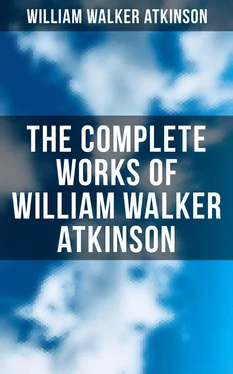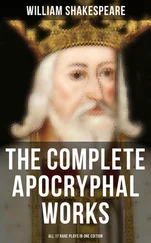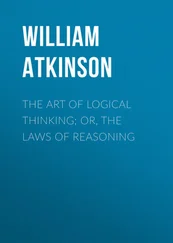The steps by which we build up a hypothesis are numerous and varied. In the first place we may erect a hypothesis by the methods of what we have described as Perfect Induction, or Logical Induction. In this case we proceed by simple generalization or simple enumeration. The example of the freckled, red-haired children of Brown, mentioned in a previous chapter, explains this method. It requires the examination and knowledge of every object or fact of which the statement or hypothesis is made. Hamilton states that it is the only induction which is absolutely necessitated by the laws of thought. It does not extend further than the plane of experience. It is akin to mathematical reasoning.
Far more important is the process by which hypotheses are erected by means of inferences from Imperfect Induction, by which we reason from the known to the unknown, transcending experience, and making true inductive inferences from the axiom of Inductive Reasoning. This process involves the subject of Causes. Jevons says: "The cause of an event is that antecedent, or set of antecedents, from which the event always follows. People often make much difficulty about understanding what the cause of an event means, but it really means nothing beyond the things that must exist before in order that the event shall happen afterward ."
Causes are often obscure and difficult to determine. The following five difficulties are likely to arise: I. The cause may be out of our experience, and is therefore not to be understood; II. Causes often act conjointly, so that it is difficult to discover the one predominant cause by reason of its associated causes; III. Often the presence of a counteracting, or modifying cause may confuse us; IV. Often a certain effect may be caused by either of several possible causes; V. That which appears as a cause of a certain effect may be but a co-effect of an original cause.
Mill formulated several tests for ascertaining the causal agency in particular cases, in view of the above-stated difficulties. These tests are as follows: (1) The Method of Agreement; (2) The Method of Difference; (3) The Method of Residues; and (4) The Method of Concomitant Variations. The following definitions of these various tests are given by Atwater as follows:
Method of Agreement : "If, whenever a given object or agency is present without counteracting forces, a given effect is produced, there is a strong evidence that the object or agency is the cause of the effect."
Method of Difference : "If, when the supposed cause is present the effect is present, and when the supposed cause is absent the effect is wanting, there being in neither case any other agents present to effect the result, we may reasonably infer that the supposed cause is the real one."
Method of Residue : "When in any phenomena we find a result remaining after the effects of all known causes are estimated, we may attribute it to a residual agent not yet reckoned."
Method of Concomitant Variations : "When a variation in a given antecedent is accompanied by a variation of a given consequent, they are in some manner related as cause and effect."
Atwater adds: "Whenever either of these criteria is found free from conflicting evidence, and especially when several of them concur, the evidence is clear that the cases observed are fair representatives of the whole class, and warrant a valid inductive conclusion."
Jevons gives us the following valuable rules:
I. "Whenever we can alter the quantity of the things experimented on, we can apply a rule for discovering which are causes and which are effects , as follows: We must vary the quantity of one thing, making it at one time greater and at another time less, and if we observe any other thing which varies just at the same times, it will in all probability be an effect ."
II. "When things vary regularly and frequently, there is a simple rule, by following which we can judge whether changes are connected together as causes and effects , as follows: Those things which change in exactly equal times are in all likelihood connected together."
III. "It is very difficult to explain how it is that we can ever reason from one thing to a class of things by generalization, when we cannot be sure that the things resemble each other in the important points .... Upon what grounds do we argue? We have to get a general law from particular facts. This can only be done by going through all the steps of inductive reasoning. Having made certain observations, we must frame hypotheses as to the circumstances, or laws from which they proceed. Then we must reason deductively; and after verifying the deductions in as many cases as possible, we shall know how far we can trust similar deductions concerning future events.... It is difficult to judge when we may, and when we may not, safely infer from some things to others in this simple way, without making a complete theory of the matter. The only rule that can be given to assist us is that if things resemble each other in a few properties only, we must observe many instances before inferring that these properties will always be joined together in other cases ."
CHAPTER XIV.
MAKING AND TESTING HYPOTHESES
Table of Content
The older philosophers and logicians were often at a loss how to reasonably account for the origin of hypotheses. It will be seen, after giving the matter a little thought, that the actual formation of the hypothesis is more than a mere grouping together or synthesis of facts or ideas—there is another mental process which actually evolves the hypothesis or theory—which gives a possible reason . What is this mental process? Let us consider the matter. Brooks well says: "The hypotheses of science originate in what is called anticipation. They are not the result of a mere synthesis of facts, for no combination of facts can give the law or cause. We do not see the law; we see the facts and the mind thinks the law . By the power of anticipation, the mind often leaps from a few facts to the cause which produces them or the law which governs them. Many hypotheses were but a happy intuition of the mind . They were the result of what La Place calls 'a great guess,' or what Plato so beautifully designates as 'a sacred suspicion of truth.' The forming of hypotheses requires a suggestive mind, a lively fancy, a philosophic imagination, that catches a glimpse of the idea through the form, or sees the law standing behind the fact."
The student of The New Psychology sees in the mental operation of the forming of the hypothesis—"the mind thinking the law"—but an instance of the operation of the activities of the Subconscious Mind, or even the Superconscious Mind. (See the volume on the Subconscious Mind in this series.) Not only does this hypothesis give the explanation which the old psychology has failed to do, but it agrees with the ideas of others on the subject as stated in the above quotation from Brooks; and moreover agrees with many recorded instances of the formation of great hypotheses. Sir Wm. Hamilton discovered the very important mathematical law of quaternions while walking one day in the Dublin Observatory. He had pondered long on the subject, but without result. But, finally, on that eventful day he suddenly "felt the galvanic circle of thought" close, and the result was the realization of the fundamental mathematical relations of the problem. Berthelot, the founder of Synthetic Chemistry, has testified that the celebrated experiments which led to his remarkable discoveries were seldom the result of carefully followed lines of conscious thought or pure reasoning processes; but, instead, came to him "of their own accord," so to speak, "as from a clear sky." In these and many other similar instances, the mental operation was undoubtedly purely subjective and subconscious. Dr. Hudson has claimed that the "Subjective Mind" cannot reason inductively, and that its operations are purely and distinctly deductive, but the testimony of many eminent scientists, inventors and philosophers is directly to the contrary.
Читать дальше












